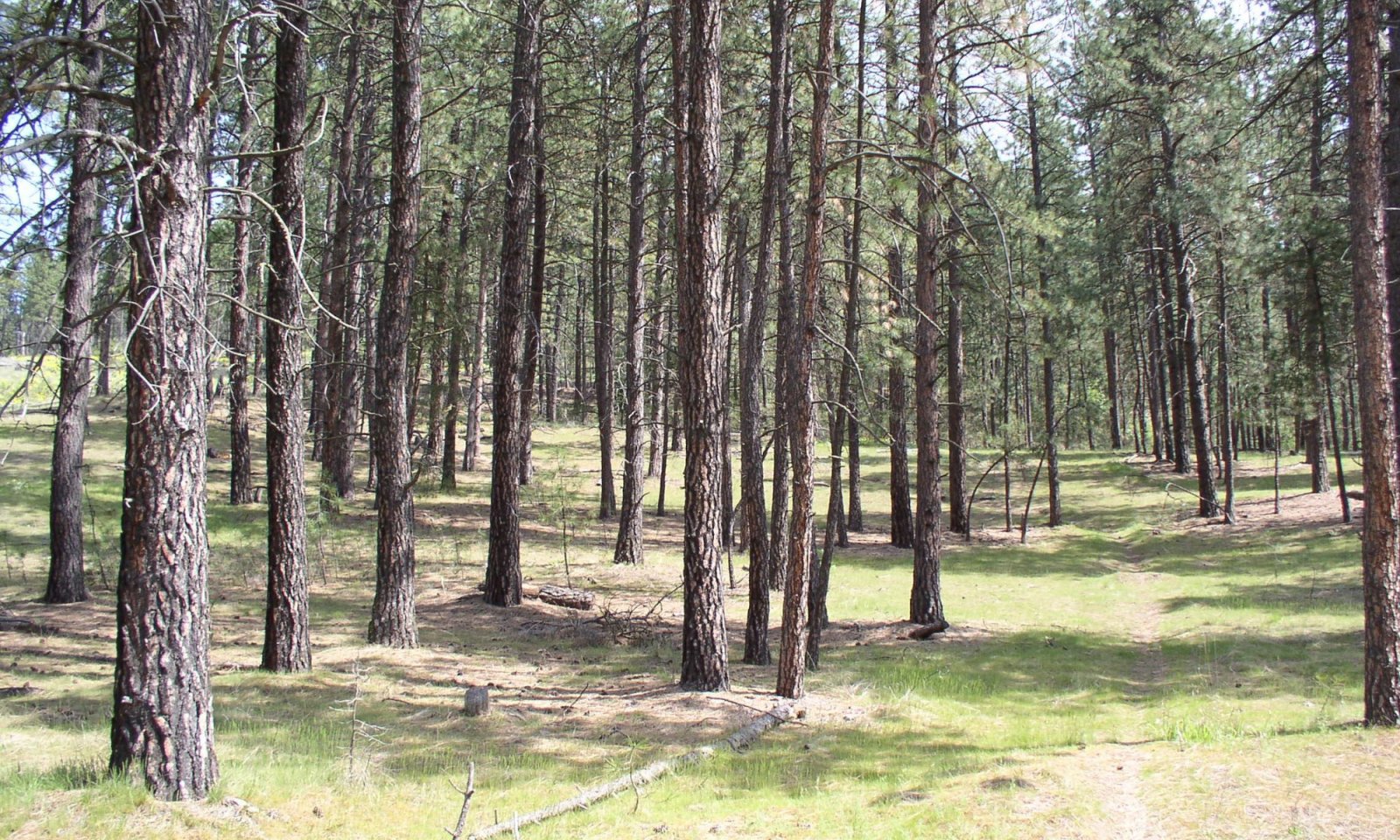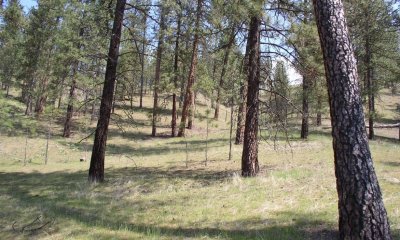
Warm, Dry, Hill Slopes and Terraces (Ponderosa Pine Warm Dry Grass) Pinus ponderosa / Pseudoroegneria spicata , Pinus ponderosa / Festuca idahoensis Pinus ponderosa - Pseudotsuga menziesii / Pseudoroegneria spicata
Scenario model
Current ecosystem state
Select a state
Management practices/drivers
Select a transition or restoration pathway
- Transition T1A More details
- Transition T1B More details
- Transition T1C More details
- Restoration pathway R2A More details
- Restoration pathway R3A More details
-
No transition or restoration pathway between the selected states has been described
Target ecosystem state
Select a state
Description
This state is dependent on the occurrence of frequent low intensity ground fires keeping an open grown pine stand with a dominant ground cover of bunchgrass. When fire intervals are infrequent pine regeneration can survive and a patchy pine woodland develops underneath the large old pine. With drought stress the large old pine can be subject to beetle kill and the understory pine stands subject to dwarf mistletoe infestation. It is also possible to have a stand replacement fire when stand density is increased and ladder fuels can reach the larger pine crowns.
Forest productivity is measured using site index (SI) and culmination of annual increment (CMAI). Ponderosa pine is the key tree species and site indexes ranges greatly depending on local site characteristics. NRCS forest site index plots taken throughout MLRA 430 shows this variability. Site index ranges from 60 - 108. Average site index for this ecological site will be 80 - 85 feet using Meyers 100-year total age table. Using the average SI CMAI would be 75 cubic feet/acre/year at 40 years of age in a fully stocked stand.
Forage production estimates from NRCS Range 5 Plots in Okanogan County in Ponderosa pine /bluebunch wheatgrass and PP/Idaho fescue sites are as follows based on overstory tree canopy. Forage production figures are in pounds/acre for all vegetation below 4.5 feet (grass, sedges, forbs, shrubs, tree regeneration): In addition, these Ppine/grass sites are adjacent to 12 – 15 inch loamy-sandy loam range sites composed of bluebunch wheatgrass and fescue in association with sagebrush and/or bitterbrush. Comparisons are made below in forage production.
Overstory tree canopy – Forage production
0 – 20% - 600 to 1100 lbs/ac
60+% < 400 lbs/ac
No tree canopy – 12 -15 inch range site
800 to 1200 lbs/ac
The bulk of the grass production was bluebunch wheatgrass and Idaho fescue. Other grass species included needle and thread grass, prairie junegrass, rough fescue, pine grass and sandberg bluegrass. The most prominent forbs were lupine, basalmroot, pussytoes, hawkweed, and yarrow. The most prominent shrub was bitterbrush. Other shrubs included currant, snowbrush ceanothus, big sagebrush, rabbitbrush, and buckwheat. Tree regeneration included mostly ponderosa pine with an occasional Douglas-fir.
Submodel
Description
Fire Exclusion for 50+ years leads to a light to medium dense pine woodland with all ages present. Canopy cover ranges from 30- 60%. Canopy cover will be higher in the pine/fescue habitat. Mixed severity fires will create a mosaic of pine stands between burned areas which will seed in with pine maintaining a multi-level pine woodland.
Submodel
Description
Invasion of introduced perennial and annual cool season grasses from adjacent pastures, homesteads, and abandoned areas. One particular annual grass of concern from past overgrazing is the invasion of cheat grass. Once it gets established in the understory it will prevent native bunchgrasses from reestablishing and restoring site.
Description
Lower level terrain converted to crops, pasture or urban development. Much of the ponderosa pine ESDs are adjacent to local towns and cities. They have been converted to housing developments, shopping malls, or urban recreation areas. In the more rural areas, these sites have been converted to pastures and dry or irrigated cropland.
Transition T1A


Mechanism
The natural fire regime intervals changed to 50+ years allowing understory pine regeneration to survive and grow creating more of a woodland site. Older larger pine now more susceptible to mortality from stand replacing fire.
Mechanism
Invasion of introduced perennial and annual grasses which outcompete native bunchgrasses
Restoration pathway R2A


Mechanism
Overstory thinning and understory burning for specified time intervals to return site to Reference State 1.
Model keys
Briefcase
Add ecological site groups and Major Land Resource Areas to your briefcase by clicking on the briefcase (![]() ) icon wherever it occurs. Drag and drop items to reorder. Cookies are used to store briefcase items between browsing sessions. Because of this, the number of items that can be added to your briefcase is limited, and briefcase items added on one device and browser cannot be accessed from another device or browser. Users who do not wish to place cookies on their devices should not use the briefcase tool. Briefcase cookies serve no other purpose than described here and are deleted whenever browsing history is cleared.
) icon wherever it occurs. Drag and drop items to reorder. Cookies are used to store briefcase items between browsing sessions. Because of this, the number of items that can be added to your briefcase is limited, and briefcase items added on one device and browser cannot be accessed from another device or browser. Users who do not wish to place cookies on their devices should not use the briefcase tool. Briefcase cookies serve no other purpose than described here and are deleted whenever browsing history is cleared.
Ecological site groups
Major Land Resource Areas
The Ecosystem Dynamics Interpretive Tool is an information system framework developed by the USDA-ARS Jornada Experimental Range, USDA Natural Resources Conservation Service, and New Mexico State University.



